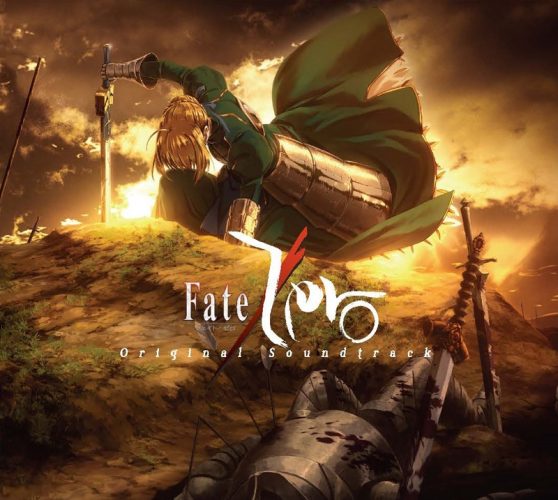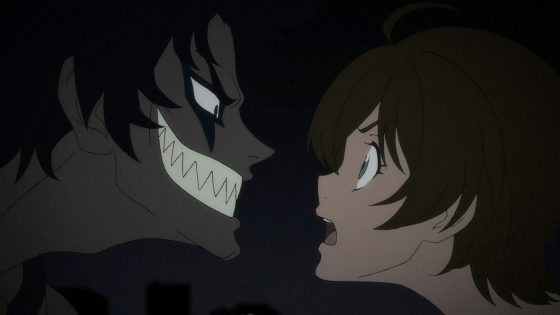
Every time one decade gives way to another, mass speculation on what defined the past years’ cultural identity is sure to follow. Call us bandwagon jumpers if you must, but our memories can’t help but look back on the 10s’ otaku media with a nuanced blend of nostalgia and cynicism. So we present you (in no particular order) with a list of the best and worst things we will remember these past 10 years of anime for.
A Lot of Freakin Anime
Japan's animation industry has been expanding ridiculously quickly over the last couple of years and that means that we've been getting more anime being made each season than ever before. Better yet, it’s opened the floodgates for way more auteur anime with creative esoteric styles that probably would have been passed up in an under-saturated animator job market. If you’re a fan of the trappings of Masaaki Yuasa, Naoki Tate or the Yoshinari brothers or if you just like having a ton of options for new anime to watch, this decade has been very kind to you.
Too Much Freakin Anime
Japan's animation industry has been expanding ridiculously quickly over the last couple of years and that means that we've been getting more anime made each season than ever before. More anime than we've had ideas for, and this has resulted in countless studios churning out unoriginal rushed cash-ins on other popular shows faster than we can even keep up with. If you're sick of seeing Sword Art Online or A Certain Magical Index rehashed with poor plots and messy visuals, this decade has not been very kind to you.
Digital Effects in Animation
Yes, it existed before, but only in the 2010s did Japanese animators really start mastering the art of computer-enhanced animation. UFOTable raised the bar forever with 2011’s Fate/Zero which used digital effects work to pile even more visual depth onto its already above-par hand-drawn animation, and the studio has only continued to push the envelope since, along with other heavyweights like Kyoto Animation, Bones, Madhouse, P.A. Works and Studio Wit. It’s no exaggeration to say that this evolution in digital animation tools has been the most positive innovation on anime’s visuals throughout the decade.
Bad Digital Effects in Animation
Adding computerized tools to your animation team's arsenal can open up a whole new world of possibilities in the right hands, but it can also lead to ugly corner-cutting and confusing visual dumpster fires in the wrong ones. With the proliferation of digital animation software, far too many animators have used these enhancements to abuse digital flashiness in a vain attempt to cover up their unpolished animation, or just abused them with no thought paid to direction or composition. And don't even get us started on how many studios still can't figure out how to do computer-generated animation competently.
The Rise of Simulcasting
It's crazy to think just how recently the Western-otaku dark ages ended. Where we once had to cross our fingers and pray that whatever anime we wanted to watch would get fansubbed if we didn't want to wait over a year for a licensee to localize it (assuming the latter would ever happen at all) services like Crunchyroll, Funimation, and Hi-Dive not only license and subtitle almost every show to come out of Japan but do it so fast that domestic broadcasts and streaming uploads are often only separated by an hour or so.
And that’s without even talking about the magic that is simuldubbing, where anime dubs tail their Japanese counterparts by a matter of days. We’ve had the fortune of witnessing the biggest leap in experiencing anime in a time frame nearer to our Eastern brethren that we will likely ever see within our lifetimes.
Bad Simulcasting
The previously mentioned streaming platforms may not be perfect, but we don’t feel the least bit conflicted in saying that they were an unquestionable net positive on the fandom. Netflix and Anime Strike, though? We’ll have to think about that one.
Sure, the licenses that landed in their laps may not have been caught by the others and Netflix even funded some of the decade's best shows like Devilman Crybaby, but if you wanted to see your simulcasts to be cast—you know—simultaneously, then it sucked to be you because you weren't getting their shows until they had completed their Japanese airings, been fully subbed, and in some cases, dubbed for good measure.
Worse yet, these guys rarely, if ever, let their properties get physical releases here despite the practice causing no apparent detriment to any of their competitors. And did we mention that you had to have to pay for an Amazon Prime account to even be allowed to spend the $5 monthly fee for Anime Strike? If you weren’t planning on ordering items or watching their live-action shows you were paying $18 a month just to stream what was a pretty sparse library of anime. This is one business model we’d be happy to leave in the past.
Final Thoughts

So, there are our musings on how the last 10 years treated our favorite pastime. Did you think we had a good decade for anime? What were the trends you’d be sad to see leave in the ‘20s? Are there any you’ll be glad to be left without? Whatever the case, leave us a comment with your thoughts and we look forward to seeing what the next 10 years have in store for otakudom.


